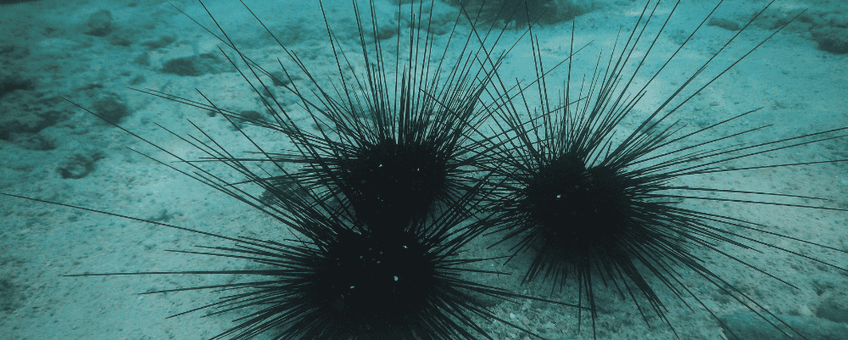
Uncovering Diadema sea urchin settlement secrets around Saba
Dutch Caribbean Nature Alliance (DCNA)This research was conducted by Van Hall Larenstein University Applied Science and Wageningen University & Research. To better understand Diadema sea urchin settlement, this study deployed artificial turf settlement collectors at nine locations around Saba, monitoring them between June 2019 to July 2020. The goal was to identify when and where sea urchin larvae settled most frequently. Key findings included identifying seasonal settlement peaks and documenting highest settlement of Diadema antillarum larvae in June and July. In addition, they found an interesting spatial distribution, with most larvae settling on the leeward (western) side of the island, where waters are calmer, compared to the windward (eastern) side, which is more exposed to rough conditions. Finally, the study highlighted the importance of hydrodynamics, noting that the calmer, sheltered waters on the leeward side likely facilitate settlement, while the turbulent conditions on the windward side inhibit it.

Why is this important?
Diadema antillarum plays a crucial role in maintaining the health of Caribbean coral reefs by grazing on algae that can otherwise outcompete coral. The mass mortality event of these sea urchins in the 1980s contributed to the dramatic decline in coral health across the Caribbean, as algae grew unchecked. Understanding the settlement patterns of these sea urchins is important for effective restoration efforts. By identifying when and where larvae are most likely to settle, conservationists can target these areas for protection and restoration.

Implications for the Dutch Caribbean
The findings from Saba provide a blueprint for similar efforts across the Dutch Caribbean. The identification of high settlement areas on the leeward side of Saba suggests that other islands with similar hydrodynamic conditions might also have optimal areas for Diadema sea urchin settlement. This knowledge can help in:
Restoration planning: By focusing restoration efforts on leeward sides of islands where larvae settle more frequently, conservationists can enhance the recovery of Diadema antillarum populations.
Coral reef health: Increased populations of Diadema antillarum can improve coral health by controlling algae growth, promoting better conditions for coral larvae to settle and grow.
Sustainable practices: The study's methods can be replicated in other parts of the Caribbean to monitor and support sea urchin populations, aiding in the broader goal of reef restoration.

Continued research and monitoring, especially in light of recent die-offs in 2022, are vital. These efforts not only help in understanding the dynamics of sea urchin populations, but also in ensuring that restoration activities are timely and effective, ultimately contributing to the resilience and sustainability of coral reef ecosystems in the Dutch Caribbean and beyond.
More information
Learn more by reading the full report.
Text: Dutch Caribbean Nature Alliance
Photo's: Hans Leijnse; Oliver Klokman
